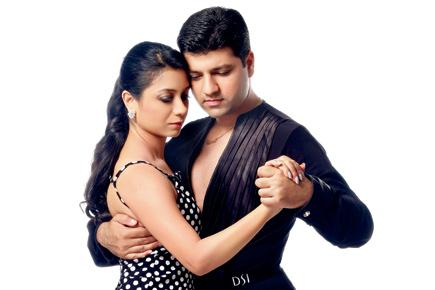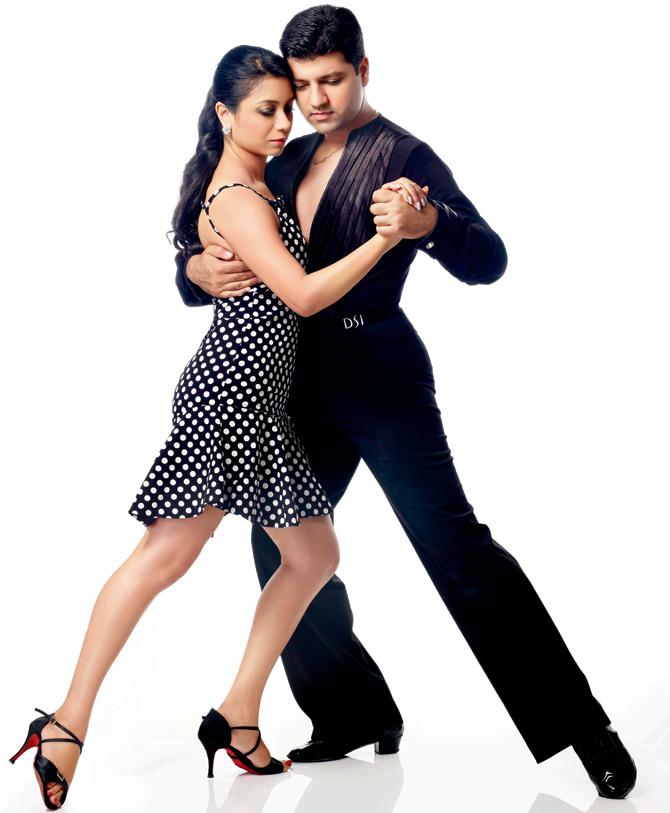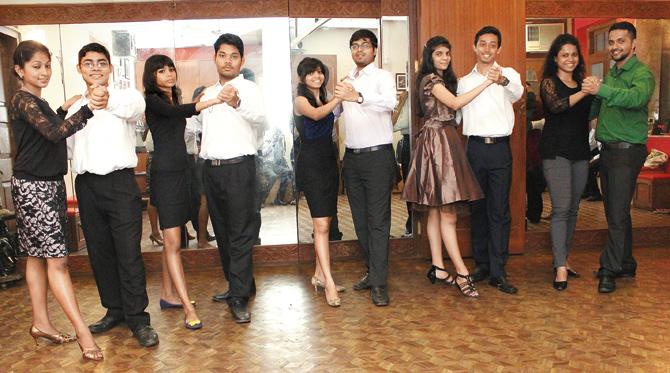With the 7th Maharashtra Latin & Ballroom DanceSport Championship kicking off today, here’s a look at those who shimmy well enough to compete, and Ballroom icons overcome with acute nostalgia

Ballroom DanceSport Championship
![]() Mumbai will witness a one of-its-kind extravaganza that will showcase athletic and rhythmic swaying of supple bodies on stage. All of this will come into the spotlight at the 7th Maharashtra Latin & Ballroom Dance Sport Championship & Exhibition.
Mumbai will witness a one of-its-kind extravaganza that will showcase athletic and rhythmic swaying of supple bodies on stage. All of this will come into the spotlight at the 7th Maharashtra Latin & Ballroom Dance Sport Championship & Exhibition.
ADVERTISEMENT

Rajeswari Vaidyanathan and Shannon Benjamin, founders of Shan & Rag’s DanceSport India
This event is a result of the efforts of Shannon and Rajeswari, founders of Shan & Ragz’s DanceSport India, affiliated to the World Dance Council, who are tirelessly promoting Latin and Ballroom dances in India.
The preview
The duo will be hosting the competition today with performances by members of renowned dance schools in Mumbai. The event is the only one of its kind held in India and will showcase over 200 competitors and dance athletes of all ages, battling it out and exhibiting Cha-Cha-Cha, Jive, Rumba, Samba, Waltz, Tango, Viennese Waltz and Argentine Tango. Apart from Mumbai, participants arrive from Pune, Goa and Belgaum.

Foxtrot at JJ Rodriguez Cours de Danse
“We have always been serious about promoting Latin and Ballroom dance forms in India. While travelling and competing abroad, we saw there was hardly a representation from India, so we wanted to create more fervour in our country,” says Shannon Benjamin, founder, DanceSport India. “Each year, we have been witnessing an increase in the number of competitors and categories, and the seriousness with which these dance forms are approached. So, to put it simply, we are trying to give them an opportunity to showcase their skills and they seem to be making the most of it,” he adds.
Good Ol’
The waltz with dance of this kind has been going on in India for many years. Crystal Rodriguez, daughter of renowned dancer JJ Rodriguez tells us that in the 1940s, people picked up dancing in a casual way — learning from friends. In 1950, her father, opened his dance school in Bombay and taught internationally standardised Ballroom and Latin dancing. “He focused on the correct technique, footwork, deportment and style of both dance forms after studying from world acclaimed dance teachers. He introduced the authentic Mambo and Cha-Cha-Cha in India,” she says.

Sandip Soparrkar and Jesse Randhawa strike a pose
On a nostalgic note, she adds, “Over the years, many dance trends evolved. The popular wartime craze — the Jitterbug was danced to Swing music, which then evolved into Rock-n-Roll, and Jive. As time went by, many a dance craze captured popular interest, from Twist to Bosanova.
But they were passing fads — not destined to last. Only Ballroom dancing remained perennially popular.” Popular in India during the British Raj,it was performed at most clubs and the army mess would have ballroom nights and parties, says popular dancer and technical director of All India DanceSport Federation, Sandip Soparrkar.
“Post Independence, the Christian in India and Anglo-Indian community took to Ballroom dancing in a big way. In the 1970s, big hotel chains like the Taj, too, started to host weekly or monthly Ballroom nights. But in 1980, the trend slowed down, and then in the new millennium, this classical dance once again gained popularity,” he says.
Aanchal Gupta, director, Arts in Motion, maintains that Ballroom dancing was initially made popular by the parents of dance teacher Salome Roy Kapur. “She is my dance teacher and mother to actor Aditya Roy Kapur. Her parents Sam and Ruby Arron pioneered Ballroom dancing in the country,” says Gupta.
Then and Now
“Since Latin Ballroom dancing also includes peppy dance steps like Samba and Jive, this sparks a high interest among the youth. We have seen that over the years, at our competition, the age of participants is dropping,” informs Benjamin. “Most young people prefer peppy Latin forms like Rock N Roll and Cha- Cha-Cha. But we also have a steady flow of students who are very interested in strict Ballroom dancing. Both, men and women, 16 to 60, and above,” says Rodriguez. “In my experience, slower forms of Ballroom such as Waltz are popular with older couples while Salsa is popular with the youth,” she adds.
Mix match
Soparrkar rues that often youngsters are confused about Ballroom dancing. “People don’t really know which dances come under the umbrella of Ballroom. There are mainly 10 Ballroom dances under two major categories — Standard Ballroom and Latin American Ballroom. Under Standard Ballroom, there are five dances — Waltz, Viennese Waltz, Foxtrot, Quickstep and Tango. Latin American Ballroom includes five dances — Rumba, Samba, Cha-Cha-Cha, Jive and Paso Doble. dances like Salsa, Bachata, Merengue, Rueda, etc which are also couple dances are not Ballroom dances. They are Latin folk dances that have become popular today.”
On the global stage
Both Rodriguez and Benjamin agree that India has not made an impact on the international arena in Ballroom dancing. “The number of participating couples on the international stage is low and our plan is to enhance the level of talent through such competitions. Every year we get an international champion to judge our event, post which we hold a boot camp for intensive training on international best practices. Next year, we will be taking the competition to the national level in order to get our country well represented on the global map,” concludes Benjamin.
Note: Refer to the masthead for ticket details
 Subscribe today by clicking the link and stay updated with the latest news!" Click here!
Subscribe today by clicking the link and stay updated with the latest news!" Click here!






